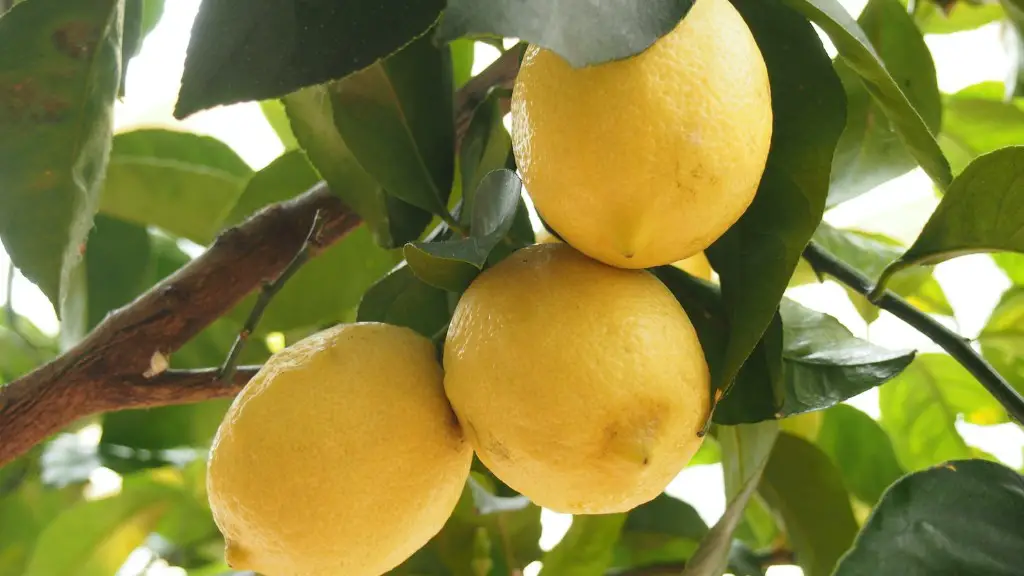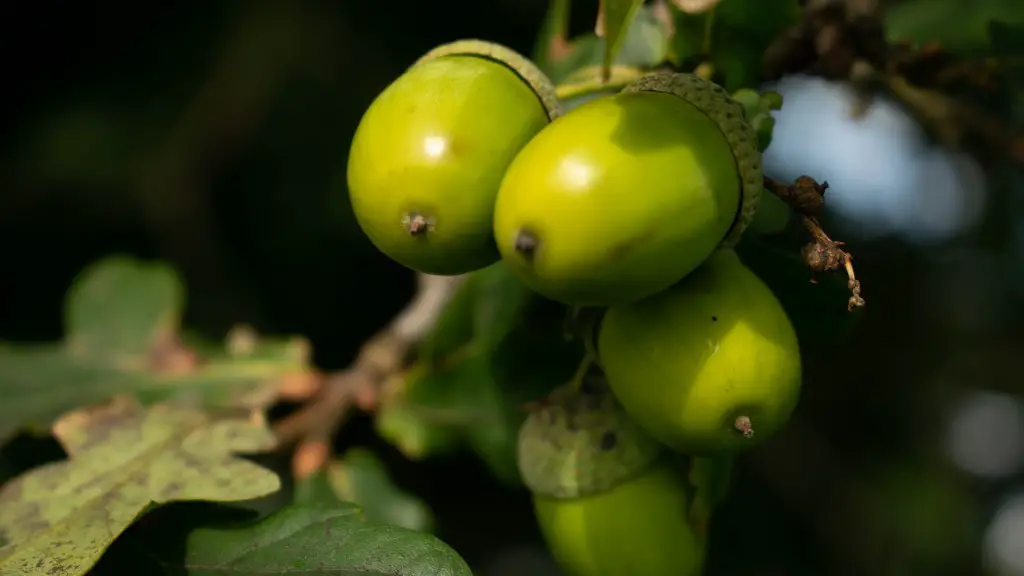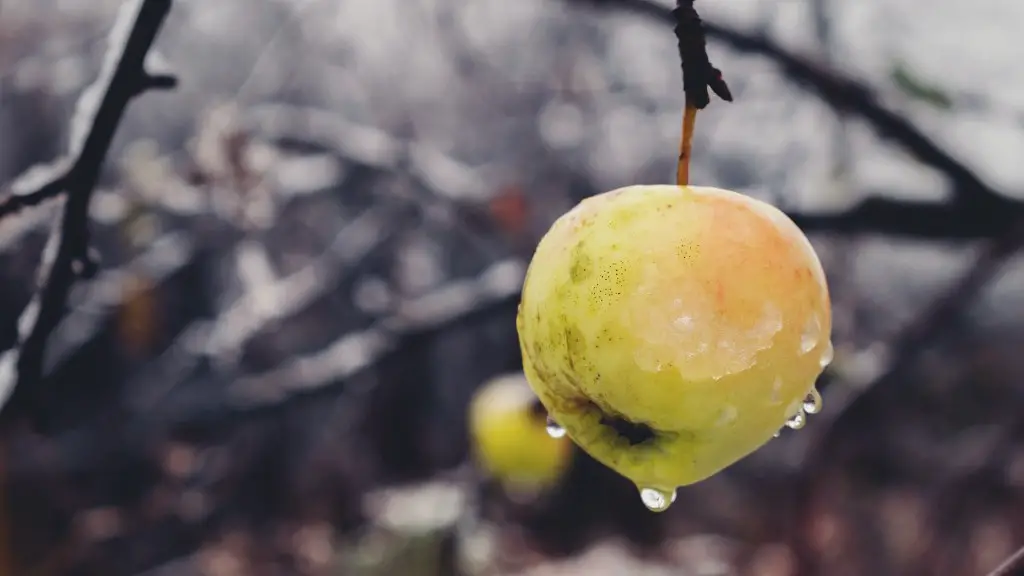Moving a lemon tree from indoors to outdoors can be a tricky process and must be done carefully. It is important to take not only the size of the tree, but also the conditions of the location into consideration when deciding when to make the transition. There is no one-size-fits-all answer to this question; the best time to move a lemon tree outdoors will vary from tree to tree. Generally speaking, it’s the best to wait until temperatures remain consistently above 50 degrees Fahrenheit during the day and no frost is forecast for the region.
The transition process should begin gradually. A successful transition should be within a 7-14 day period and it’s important to remember that the tree will need extra water during this period. It’s best to begin the transition with short periods of time outside and work up to longer periods as the tree acclimates.
It is important to decide which area to plant the tree. It needs well-drained, slightly acidic soil and full sun. It is advisable to have a 6-8 inch deep layer of mulch 2-3 inches away from the trunk. This will help the soil to remain moist, should aid in eliminating weeds, and will help keep the soil warmer during the night.
After selecting an appropriate area for the tree it is important to check the soil is suitable and well-drained. This can be done by digging a small hole in the chosen area and fill it with water. If the water remains after 1 hour then the soil is not draining well and a different location should be chosen or amendment to the soil made. If not, then the tree is ready to be planted.
To get the tree ready move it into a pot or on a tarp, which will later be used to move the tree without causing damage. Before taking out of the pot, loosen roots that may have grown around the edge of the container, cut off dead roots and reduce a third of the root mass.
Once the tree is placed in the hole, backfill the hole partially. It’s important to mix the soil with compost to give the tree the nutrients it needs to recover from the transition process. Once filled, press the soil lightly and use the remaining soil to form a ring around the tree about 3 inches away from the trunk. This helps to hold the water around the base of the tree.
Finally, give the tree a good watering. The tree should be kept moist throughout the growing season and mulch should be added to retain moisture. It’s important to note that although the tree needs more water during the transition, it will eventually require less water as it becomes established.
How To Care For Your Lemon Tree Outdoors
Once the tree is outside and planted care is needed to ensure it develops and produces healthy and juicy lemons. This includes water, soil nutrients, pesticides, pruning and pest control.
Water is essential for lemon tree development. The tree should receive 1-2 inches of water each week when temperatures are warm, and more during hot periods without rain. Trees should usually receive a deep water about once per month for the best root and fruit development. In addition to water, the soil should be tested and provided with fertilizer quarterly.
Pesticides may also be required to keep the tree healthy. There are a variety of threats when it comes to citrus trees, from citrus leaf miners to mealy bugs, so it is important to check the trees regularly and identify the insects and pests believed to be causing an issue. Different kinds of pesticides may be used to deal with the threat, depending on their severity.
Pruning is important to produce healthy fruit on the lemon tree. This should be done at least once a year, right after the harvest. Removal of old branches (wood with no leaves) and overgrown branches should be done to allow better access of light and air to the tree. Find a natural shape and never remove more than a third of the branches at once.
Finally, pest control should also be considered. Signs of pests such as aphids, caterpillars, mites, and snails should be checked for. If a problem is found, sprinkling diatomaceous earth on and around the tree may help to tackle the pests.
Difference Between Indoor and Outdoor Lemon Trees
An indoor lemon tree can be a beautiful and vibrant addition to a home, but there is a major difference between indoor and outdoor varieties. Outdoors, lemon trees can enjoy sun, rain and soil fertility which are essential elements for a fruit-bearing citrus tree.
The tree outdoors is exposed to variations in soil and prefers soil with a high concentration of calcium, with a pH level around 6.8 and regular watering with water that has a moderate amount of nitrogen and potassium. Outdoor lemon trees produce larger fruits with a greater sugar content, while indoor trees are smaller and produce less sweet lemons.
The climate also plays an important role in the development of the lemon tree. While warm Mediterranean temperatures support its growth and development, cold temperatures are not suitable. Generally, temperature should not be lower than 7 – 10°C (45 – 50°F) for the tree to flourish.
In addition to climate and soil requirements, outdoor lemon trees will require more protection from threats such as wind, frost, insect pests, and diseases. Strong winds can damage the tree and the fruit and can dry out the leaves, making them more susceptible to pests and disease. Making sure the tree is well-protected from strong winds is important.
Frost also endangers the life of the lemon tree and it is important to protect the tree from frost by covering it during extreme cold. This is done by covering the base of the tree with a blanket or tarp, and an additional layer of frost blanket can be added over the top.
Finally, protection from the common pest problems will be necessary. Common pest problems include aphids, whitefly, mealybugs, scale, and mites. Treating the tree with insecticides may be necessary if these pests become a problem.
Harvesting the Lemons
When the lemons ripen, it is important to pick them at the right time for the best results. Generally, lemons ripen when they have turned yellow and are slightly soft when touched. However, if left too long on the tree, they will bitter. And, if picked too early, they won’t develop their full flavor. The best time is when the lemons become rounded and have a slight bumpiness on the surface.
As with pruning and other tree care procedures, the harvested lemons need to be handled with care. Make sure the lemons have fully matured before attempting to separate them from the tree; test to see if they are firm and the peeling is full yellow.If the leaves are still attached to the fruit, take care not to tear them, as the leaves serve as protection for the fruits.
When harvesting, using a sharp knife or scissors is recommended. Cut the stems of the lemons flush with the branch, and avoid pulling them, as this can damage the branch and hinder future fruit production. It is also important to check the tree for other fruit and pests during the harvesting process. For large lemon trees, it is recommended to use a picking ladder.
Once the lemons are off the tree, they’re ready to be used. Enjoy the freshly picked lemon juice over some grilled fish or store in the fridge and enjoy with a salad or a smoothie.
Lemons Trees Combating Pests and Diseases
Citrus trees may succumb to various pests and diseases, whether it be indoors or outdoors. The lemon tree may suffer from a variety of diseases such as citrus canker, ‘Greasy spot’ and exocortis, as well as many insect pests such as red scale, white fly, and aphids.
In order to combat pests and disease on the tree, it is important to ensure it is growing in the correct environment. Adequate sunlight, humidity, and soil quality are all important for maintaining a healthy citrus tree. Creating a favourable environment for the tree to grow, by regulating the amount of water, nutrients and air circulation, can help reduce the risk of pests and disease.
Regular inspection of the tree is also important to identify any signs of pests or diseases, and take necessary action. If an infestation is identified, pesticides should be applied, although it is important to make sure the right type is used to tackle the specific pest. In addition to this, removing infected fruit and leaves may help fight against the pests on the tree, as well as pruning the tree to ensure good airflow.
The lemon tree is a beautiful and fragrant addition, whether you grow it indoors or outdoors. Ensuring you are armed with the correct knowledge and resources is essential for a successful lemon tree, as well as understanding when, where and how to move it to its new home.





